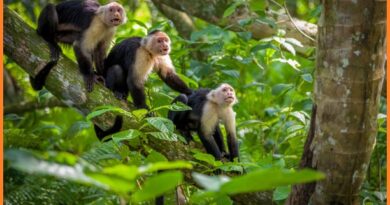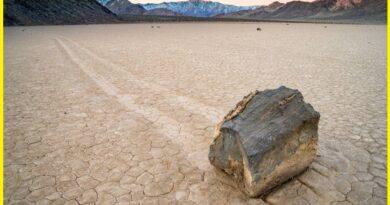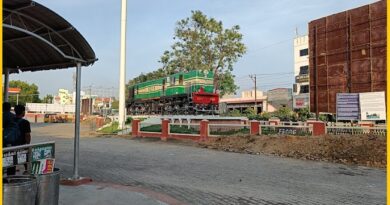The Tibetan Plateau-‘Roof of the World’ and A Spiritual heritage site
The Tibetan Plateau
The Tibetan plateau, also known as the “Roof of the World,” is a vast, high-elevation region in Central Asia that encompasses much of Tibet and parts of several surrounding countries, including China, India, Nepal, and Bhutan. It is the highest plateau in the world, with an average elevation of over 4,500 meters and covering an area of around 2.5 million square kilometers.
The Tibetan plateau is an important ecological and cultural region, home to numerous unique and endangered plant and animal species, including the Tibetan antelope, snow leopard, and Tibetan yak. It is also the source of many of Asia’s major rivers, including the Yangtze, Yellow, and Mekong, making it a vital water resource for millions of people in the region.
The Tibetan plateau has been inhabited for thousands of years and is home to several distinct ethnic and linguistic groups, including the Tibetans, who have a rich spiritual and cultural heritage. Buddhism has been a major influence on the culture of the region, and the plateau is home to many important monasteries and religious sites, including the Potala Palace in Lhasa, the former residence of the Dalai Lama.
Tibetan plateau elevation-The Tibetan Plateau is the highest and largest plateau in the world, with an average elevation of over 4,500 meters above sea level. It covers an area of around 2.5 million square kilometers and has an average thickness of 4 to 5 kilometers of sediment and crustal material. Tibetan plateau map-Tibetan plateau map high-quality maps show the region’s topography, major cities and towns, rivers, and other geographical features.

Where is the Tibetan plateau
The Tibetan Plateau is located in Central Asia, covering much of the Tibet Autonomous Region in China as well as parts of other neighboring countries including India, Nepal, Bhutan, and Pakistan. It is situated to the north of the Himalayan mountain range. The plateau is bordered by some of the world’s highest mountain ranges, including the Himalayas to the south, the Kunlun Mountains to the north, and the Karakoram range to the west.
Geography and Geology
The highest peak on the Tibetan Plateau is Mount Everest, which is located on the plateau’s southern edge and has an elevation of 8,848 meters above sea level. Other notable peaks on the plateau include Cho Oyu, Shishapangma, and Lhotse. The plateau’s high elevation has a significant impact on its climate and ecology, with temperatures often dropping well below freezing and many areas experiencing extreme aridity due to the high altitude and dry air.

The geological history of the Tibetan Plateau is closely related to that of the Himalayas. The Himalayas belong to the Alpine Orogeny, and the younger mountain ranges on the planet, consisting mostly of uplifted sedimentary and metamorphic rock. This formation is a continental collision or orogeny along the convergent boundary between the Indo-Australian Plate and the Eurasian Plate.
Also, read- List of 8 Tallest Mountains in The World
The collision began in the Upper Cretaceous period about 70 million years ago, when the north-moving Indo-Australian Plate, moving at about 15 cm per year, collided with the Eurasian Plate. About 50 million years ago, the Indo-Australian plate had completely closed the Tethys Ocean, the existence of which has been determined by sedimentary rocks settled on the ocean floor, and the volcanoes that fringed its edges. Since these sediments were light, they crumpled into mountain ranges rather than sinking to the floor.
City of the Tibetan plateau
The Tibetan Plateau is home to several cities, towns, and settlements, including Lhasa, the capital of the Tibet Autonomous Region in China. Other notable cities and towns on the plateau include:
Shigatse: the second-largest city in the Tibet Autonomous Region, known for its historic Tashilhunpo Monastery.
Gyantse: a small town known for its historic fort and Palcho Monastery.
Tsetang: considered the cradle of Tibetan civilization, and known for its ancient Yumbulagang Palace.
Nyingchi: a scenic town located in southeastern Tibet, known for its lush forests, gorges, and scenic beauty.
Chamdo: a remote city in eastern Tibet, known for its stunning scenery and ancient Tibetan history.
Zhangmu: a small border town located on the Nepal-China border, known for its scenic beauty and proximity to the Himalayas.
These are just a few examples, as there are many other cities and towns on the Tibetan Plateau, each with its unique culture, history, and attractions.
Tibetan plateau animals
The Tibetan Plateau is home to a unique and diverse array of animals, many of which are adapted to the high-elevation and harsh climatic conditions of the region. Here are some of the notable animals that can be found on the Tibetan Plateau-
- Tibetan antelope (chiru): a graceful and agile antelope known for its distinctive curved horns, which are prized by poachers for use in traditional Chinese medicine.
- Snow leopard: a large and elusive predator known for its ability to thrive in high-altitude environments and its striking coat of white and gray fur.
- Tibetan yak: a sturdy and hardy domesticated animal that has been an important source of milk, meat, and transport for Tibetan people for thousands of years.
- Tibetan mastiff: a large and powerful dog breed known for its loyalty and protective instincts, traditionally used to guard livestock and homes in the region.
- Wild yak: a close relative of the domesticated yak, the wild yak is a powerful and solitary animal that is well adapted to life on the high-elevation grasslands of the Tibetan Plateau.
- Tibetan gazelle: a swift and graceful antelope that can be found in large herds on the grasslands and steppes of the Tibetan Plateau.
- Himalayan blue sheep (bharal): a sure-footed and agile sheep species that are well adapted to life in the rocky and mountainous terrain of the Tibetan Plateau.

Tibetan plateau weather
The weather on the Tibetan Plateau is characterized by its high altitude and arid climate, which is influenced by the plateau’s topography and location. The plateau experiences significant temperature fluctuations, with cold and dry winters and warm and wet summers.
During the winter months (December to February), temperatures can drop well below freezing, especially at higher elevations. Snowfall is common in many areas, and the strong winds that sweep across the plateau can make conditions feel even colder. In the summer months (June to August), the temperature on the plateau rises, and many areas experience warm and pleasant weather. However, the summer is also the rainy season, with much of the plateau receiving the bulk of its annual precipitation during these months.
Overall, the climate on the Tibetan Plateau is relatively harsh and challenging, with low humidity, strong winds, and extreme temperature fluctuations. These conditions can be challenging for both human inhabitants and wildlife, but they have also helped to shape the unique and diverse ecosystem of the region.




Pingback: What Is The Cretaceous–Paleogene (k–pg) Boundary? - Geotourism